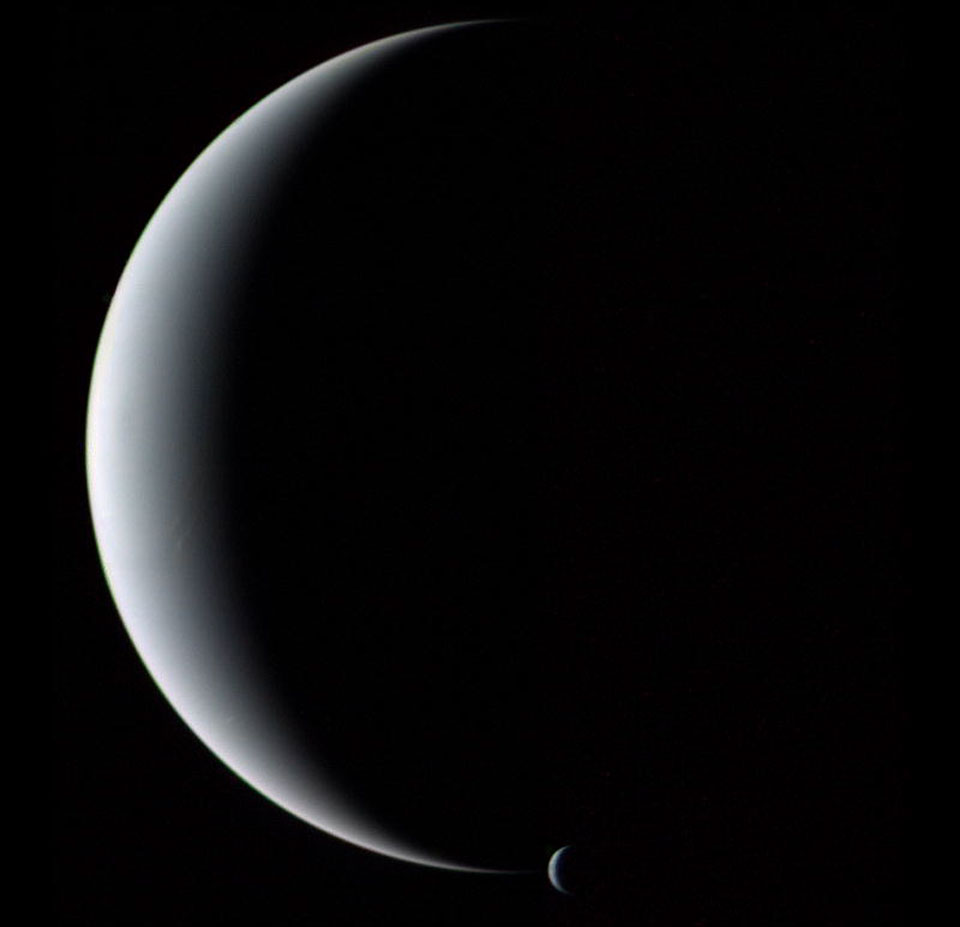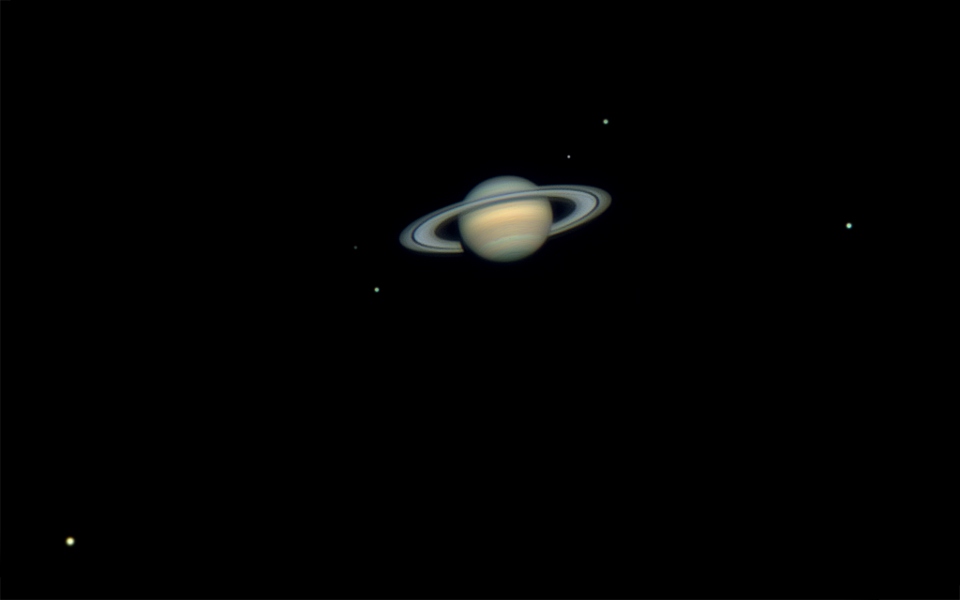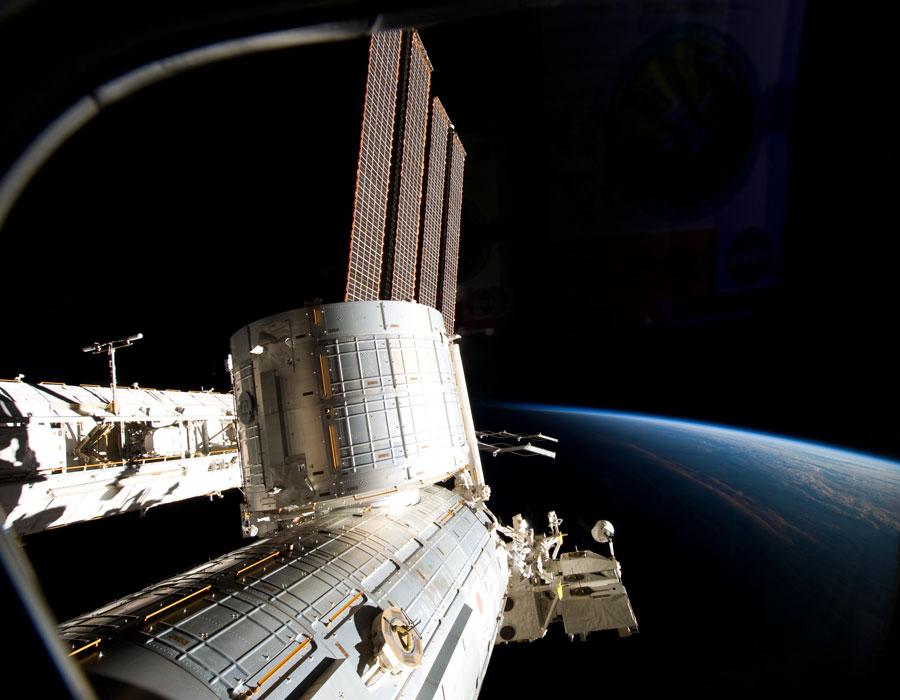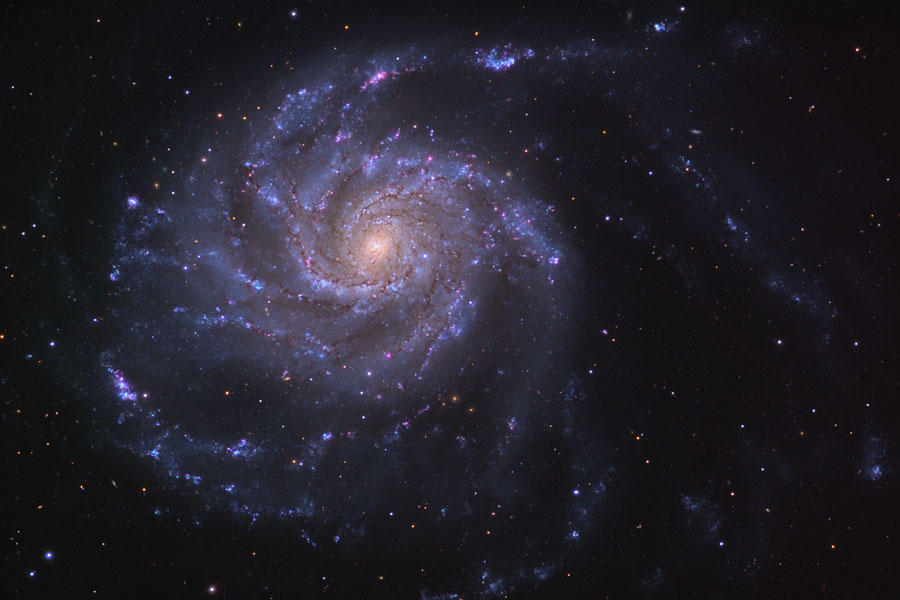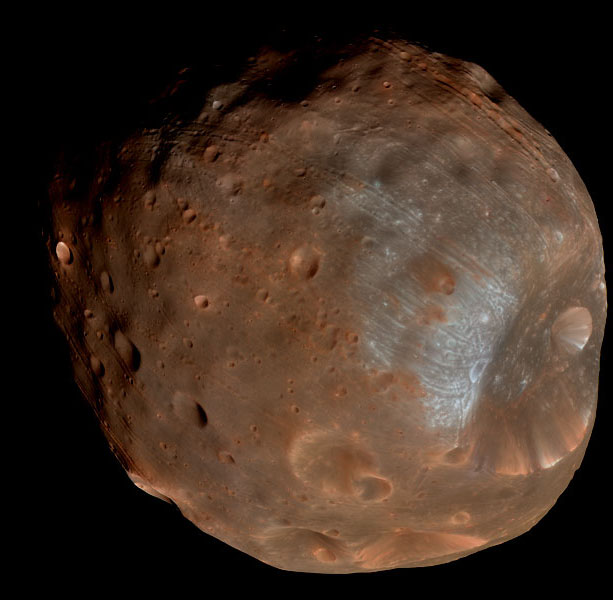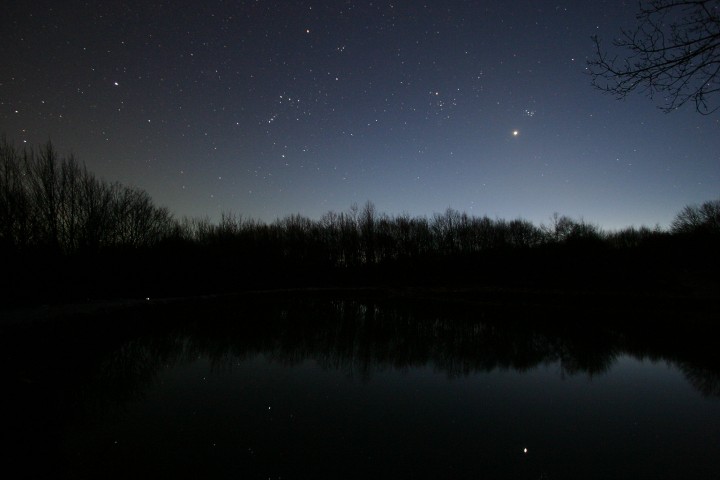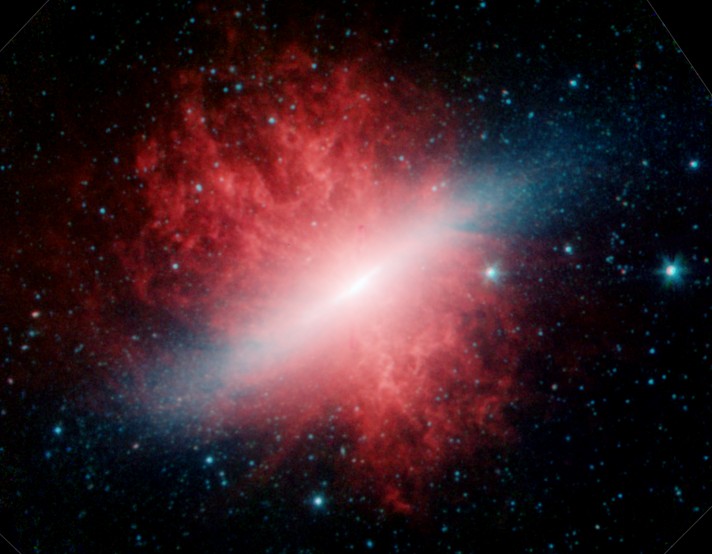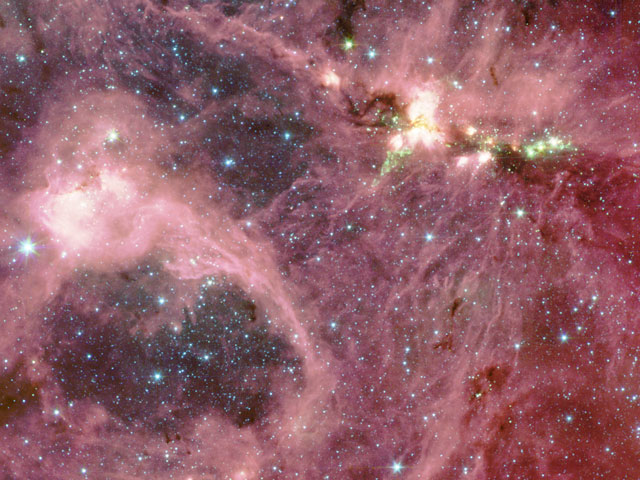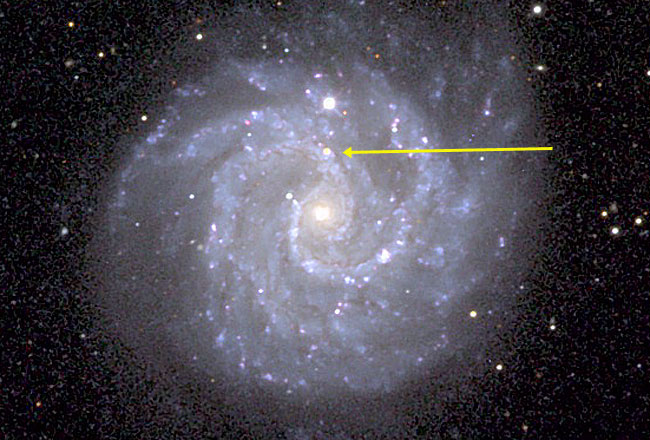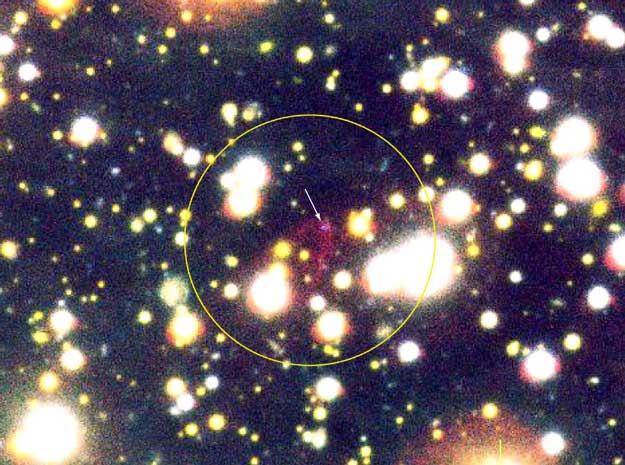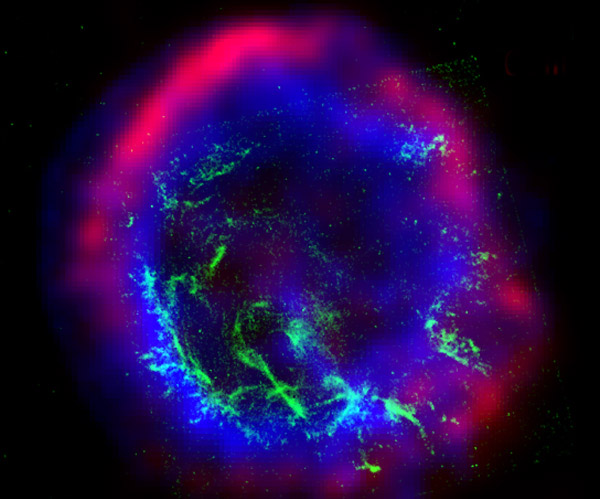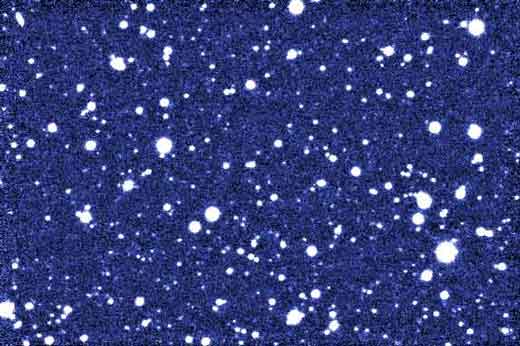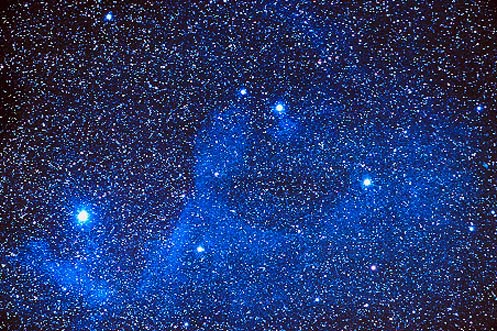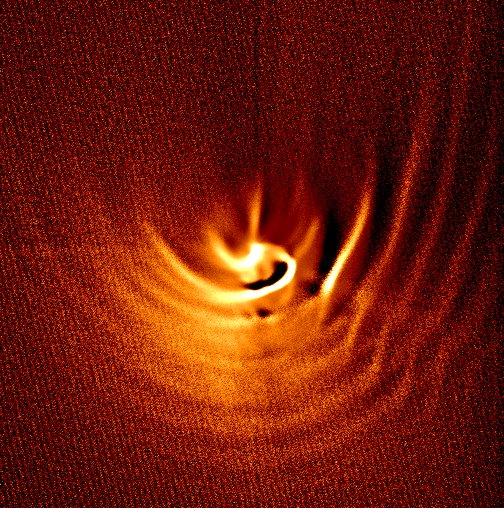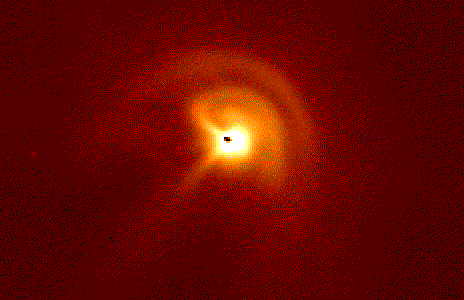| << Previous | Index | Next >> |
2015
Click to play embedded YouTube video.
Video Credit & Copyright: Stephan Heinsius (Eclipseland)
2014 Is there a monster in IC 1396? Known to some as the Elephant's Trunk Nebula, parts of gas and dust clouds of this star formation region may appear to take on foreboding forms, some nearly human. The only real monster here, however, is a bright young star too far from Earth to hurt us. Energetic light from this star is eating away the dust of the dark cometary globule near the top of the above image. Jets and winds of particles emitted from this star are also pushing away ambient gas and dust. Nearly 3,000 light-years distant, the relatively faint IC 1396 complex covers a much larger region on the sky than shown here, with an apparent width of more than 10 full moons.
2013 Gliding silently through the outer Solar System, the Voyager 2 spacecraft camera captured Neptune and Triton together in crescent phase in 1989. The elegant picture of the gas giant planet and its cloudy moon was taken from behind just after closest approach. It could not have been taken from Earth because Neptune never shows a crescent phase to sunward Earth. The unusual vantage point also robs Neptune of its familiar blue hue, as sunlight seen from here is scattered forward, and so is reddened like the setting Sun. Neptune is smaller but more massive than Uranus, has several dark rings, and emits more light than it receives from the Sun.
2012 How many moons does Saturn have? So far 62 have been discovered, the smallest only a fraction of a kilometer across. Six of its largest satellites can be seen here, though, in a sharp Saturnian family portrait taken on March 9. Larger than Earth's Moon and even slightly larger than Mercury, Titan has a diameter of 5,150 kilometers and starts the line-up at the lower left. Continuing to the right across the frame are Mimas, Tethys, [Saturn], Enceladus, Dione, and Rhea at far right. Saturn's first known natural satellite, Titan was discovered in 1655 by Dutch astronomer Christiaan Huygens, while most recently the satellite provisionally designated S/2009 S1 was found by the Cassini Imaging Science Team in 2009. Tonight, Saturn reaches opposition in planet Earth's sky, offering the best telescopic views of the ringed planet and moons.
2011 Dust clouds and embedded newborn stars glow at infrared wavelengths in this tantalizing false-color composition from WISE, the Wide-field Infrared Survey Explorer. The cosmic canvas features one of the closest star forming regions, part of the Rho Ophiuchi cloud complex some 400 light-years distant near the southern edge of the pronounceable constellation Ophiuchus. After forming along a large cloud of cold molecular hydrogen gas, young stars heat the surrounding dust to produce the infrared glow. Stars in the process of formation, called young stellar objects or YSOs, are embedded in the compact pinkish nebulae seen here, but are otherwise hidden from the prying eyes of optical telescopes. An exploration of the region in penetrating infrared light has detected emerging and newly formed stars whose average age is estimated to be a mere 300,000 years. That's extremely young compared to the Sun's age of 5 billion years. The prominent reddish nebula at the lower right surrounding the star Sigma Scorpii is a reflection nebula produced by dust scattering starlight. This view from WISE spans almost 2 degrees and covers about 14 light-years at the estimated distance of the Rho Ophiuchi cloud.
2010 The International Space Station is the largest object ever constructed by humans in space. The station perimeter now extends over roughly the area of a football field, although only a small fraction of this is composed of modules habitable by humans. The station is so large that it could not be launched all at once -- it is being built piecemeal with large sections added continually by flights of the Space Shuttle. To function, the ISS needs huge trusses, some over 15 meters long and with masses over 10,000 kilograms, to keep it rigid and to route electricity and liquid coolants. Pictured above, part of the immense space station was photographed out of a window by a member of the visiting Space Shuttle Discovery STS-131 crew. Visible in the foreground is Japan's Kibo research module, while a large truss is visible toward the left. On the far right, a crescent Earth slices through the blackness of space.
2009 Why do many galaxies appear as spirals? A striking example is M101, shown above, whose relatively close distance of about 27 million light years allows it to be studied in some detail. Recent evidence indicates that a close gravitational interaction with a neighboring galaxy created waves of high mass and condensed gas which continue to orbit the galaxy center. These waves compress existing gas and cause star formation. One result is that M101, also called the Pinwheel Galaxy, has several extremely bright star-forming regions (called HII regions) spread across its spiral arms. M101 is so large that its immense gravity distorts smaller nearby galaxies.
2008 This moon is doomed. Mars, the red planet named for the Roman god of war, has two tiny moons, Phobos and Deimos, whose names are derived from the Greek for Fear and Panic. These martian moons may well be captured asteroids originating in the main asteroid belt between Mars and Jupiter or perhaps from even more distant reaches of the Solar System. The larger moon, Phobos, is indeed seen to be a cratered, asteroid-like object in this stunning color image from the Mars Reconnaissance Orbiter, recorded at a resolution of about seven meters per pixel. But Phobos orbits so close to Mars - about 5,800 kilometers above the surface compared to 400,000 kilometers for our Moon - that gravitational tidal forces are dragging it down. In 100 million years or so Phobos will likely be shattered by stress caused by the relentless tidal forces, the debris forming a decaying ring around Mars.
2007 Finding Venus in the night sky is not too hard these days. Now appearing as the evening star, Venus rules as the brightest celestial beacon in west just after sunset. And if you can find Venus tonight, you can also easily find the lovely Pleiades star cluster (aka M45) close by. In this serene skyview, recorded on Tuesday near Bolu, Turkey, Venus and the Pleiades are on the right, with brilliant Venus reflected in the calm waters of the small lake in the foreground. Left of Venus, the bright star Aldebaran anchors the V-shaped Hyades star cluster. Farther left are stars of the familiar constellation Orion with Rigel, at the foot of Orion, also reflected in the lake. Meanwhile, Sirius, in Canis Major, is the brightest star on the left side of the view. But the bright terrestrial light below Sirius is not a reflection, it's just a light near the lake shore.
2006 Very bright in infrared light, well-known starburst galaxy M82's popular name describes its suggestive shape seen at visible wavelengths - The Cigar Galaxy. Ironically, M82's fantastic appearance in this Spitzer Space Telescope image really is due to cosmic "smoke" - the infrared emission of exented dust features blown by stellar winds from M82's luminous, central star forming regions. The false-color view highlights a component of dust emission from complex carbon molecules called polycyclic aromatic hydrocarbons or PAHs. PAHs are also seen in star forming regions throughout our own, much calmer, Milky Way Galaxy and are products of combustion on planet Earth. Likely triggered by interactions with nearby galaxy M81, M82's intense star formation activity appears to be blowing out immense clouds of dust and PAHs extending nearly 20,000 light-years both above and below the galactic plane. M82 is about 12 million light-years away in the constellation Ursa Major.
2005 After parting with the Sun late last week, April's moon graced the early evening sky. Its slender, three-day-old crescent shares this lovely telescopic skyview with the nearby Pleiades star cluster. Here, the Moon's sunlit crescent is overexposed while the lunar terminator, or boundary between lunar night and day, is jagged with craters and mountains. Lunar surface features can also be seen in the dim lunar night illuminated by earthshine - light from sunlit planet Earth. The sister stars of the Pleiades are grouped at the right, but their alluring blue reflection nebulae, usually highlighted in telescopic images of the cluster, are washed-out in the much brighter moonlight.
2004 Deep in the normally hidden recesses of giant molecular cloud DR21, a stellar nursery has been found creating some of the most massive stars yet recorded. The orbiting Spitzer Space Telescope's Infrared Array Camera opened the window into the cloud last year in mid- infrared light. The cloud is opaque to visible light because of dense interstellar dust. Noticeable in the above representative color infrared Spitzer image are huge bubbles, a complex tapestry of dust and gas, and very massive stars. The infrared filaments actually glow because of organic compounds known as PAHs. The intricate patterns are caused by complex interactions between interstellar winds, radiation pressures, magnetic fields, and gravity. The pictured region spans about 75 light years and lies about 6,000 light years distant toward the constellation of Cygnus.
2003 New evidence has emerged that a mysterious type of explosion known as a gamma ray burst is indeed connected to a supernova of the type visible in the above image. Two weeks ago, the orbiting HETE satellite detected gamma-ray burst GRB030329. The extremely bright burst was found hours later to have an extremely bright afterglow in visible light, and soon set the record for the closest measured distance at redshift 0.17. The afterglow brightness allows unprecedented coverage of its evolution. Just this week, as many astronomers suspected would happen, the afterglow began to appear as a fading Type II Supernova. Type II Supernovas might not appear coincident with gamma-ray bursts, however, when the gamma-ray beam goes in another direction. The above spiral galaxy, NGC 3184, was home to a Type II Supernova in 1999 at the position of the arrow. Astronomers are currently pressing hard to find the host galaxy for GRB030329.
2002
2001 Forty years ago, on April 12, 1961, Soviet cosmonaut Yuri Alexseyevich Gagarin became the first human in space. His remotely controlled Vostok 1 spacecraft lofted him to an altitude of 200 miles and carried him once around planet Earth. Gagarin was strictly a passenger on this flight. As a precaution against the unknown physiological effects of spaceflight on piloting skills and judgement, his onboard controls were locked out by a secret combination. In case of emergency he carried the combination in a sealed envelope. After reentry, Gagarin ejected from the Vostok at an altitude of 20,000 feet and parachuted to Earth. How was the first view from space? He reportedly commented, "The sky is very dark; the Earth is bluish. Everything is seen very clearly". Coupled with other accomplishments, this flight confirmed the early Soviet lead in the space race -- the first US astronaut would not be launched until almost a month later and then on a comparatively short suborbital flight. Born on March 9, 1934, Gagarin was an air force jet pilot before being chosen for the first group of cosmonauts in 1960. As a result of his historic flight he became an international hero and legend. Killed when his MIG jet crashed during a training flight on March 27, 1968, Gagarin was given a hero's funeral, his ashes interred in the Kremlin Wall.
2000 Not all stars form a big Q after they explode. The shape of supernova remnant E0102-72, however, is giving astronomers a clue about how tremendous explosions disperse elements and interact with surrounded gas. The above image is a composite of three different photographs in three different types of light. Radio waves, shown in red, trace high-energy electrons spiraling around magnetic field lines in the shock wave expanding out from the detonated star. Optical light, shown in green, traces clumps of relatively cool gas that includes oxygen. X-rays, shown in blue, show relatively hot gas that has been heated to millions of degrees. This gas has been heated by an inward moving shock wave that has rebounded from a collision with existing or slower moving gas. This big Q currently measures 40 light-years across and was found in our neighboring SMC galaxy. Perhaps we would know even more if we could buy a vowel.
1999 How far can you see from your own backyard? Across the Solar System, even across our Galaxy, these sights are not difficult. Recently, however, amateur Paul Boltwood gazed across the universe. His record setting image is shown above in false color. Boltwood imaged sources more faint than magnitude 24 in response to a challenge made to amateur astronomers by Yale Astronomy Professor Bradley Schaefer. Objects this dim tend to be galaxies billions of light years away. Although professionals have recently recovered objects as dim as magnitude 30, Boltwood's image rivals even the best professional efforts of only a few decades ago. Since then, photon-catching Charge Coupled Devices (CCDs) have allowed high efficiency frames to be added together. As evidence, Boltwood used only a 16-inch telescope, but co-added 767 exposures each lasting only two minutes.
1998 Wisps of dust fill the space between the stars. This dust is usually invisible, subtly acting to dim the light of more distant stars. Sometimes this dust is thick and prominent as dark patches on otherwise bright emission nebulae. Other times this dust may show itself by reflecting the light of bright, nearby stars. Because bright stars tend to be blue, and because dust reflects blue light more easily than red, the resulting reflection nebula usually appears blue. Pictured above is the reflection nebula Sharpless 2-1 in the constellation of Scorpius.
1997 Comet Hale-Bopp is spinning. The nucleus of the comet is a dirty snowball about 25 miles in diameter that spins about once every 12 hours. As Comet Hale-Bopp spins, parts of the comet's surface shoot away in jets. Ejected material therefore makes rings, which appear in above photograph as "hoods" in the coma. Even though the central part of Comet Hale-Bopp's coma is quite condensed, the nucleus is not visible. Comet Hale-Bopp is now headed south, away from the Sun, and is getting dimmer. At its brightest last week, it was even brighter than Comet Hyakutake was last year, although with a less prominent tail. Comet Hale-Bopp will still be easily visible to northern observers for several weeks in the northwest sky after sunset.
1996 Comet Hyakutake will reach its closest point to the Sun on May 1, passing well inside the orbit of Mercury. At this time, the comet's dust and ion tail will be at their greatest physical length. As the comet nears the Sun, gas and dust are driven off the surface, sometimes being shot off in jets. Although much of this material ends up in the tail, some interesting features can be seen close to the comet's three kilometer nucleus. Because the comet's nucleus rotates, the jets can be seen to form arcs around the comet's center resembling a pinwheel. The above photograph, taken April 8, shows two expanding arcs of cometary material and two source jets. The outermost arc is at a projected distance of 12,000 kilometers from the nucleus. The inner is about 8,000 kilometers from the nucleus. They are expanding from the nucleus at 870 km per hour. The inner arc ends at the brightest of the Comet Hyakutake's many jets.
| << Previous | Index | Next >> |

